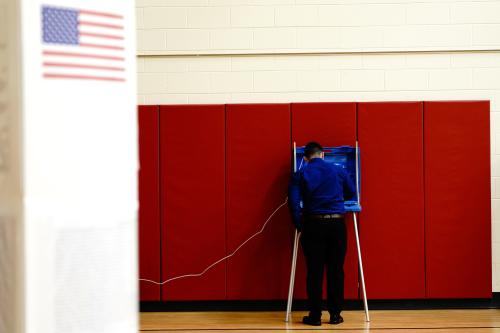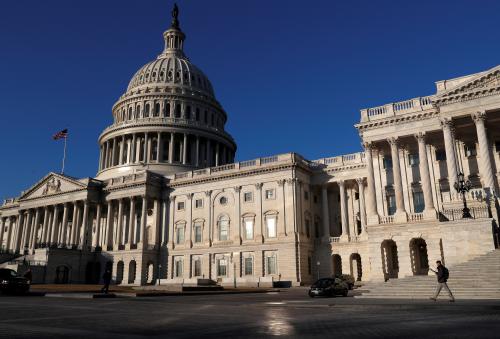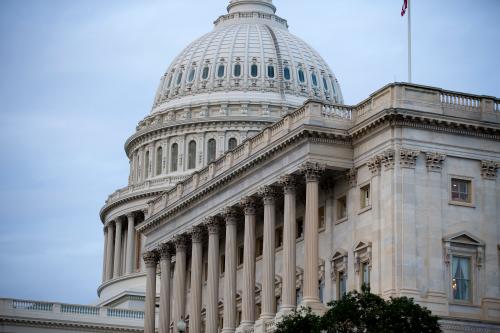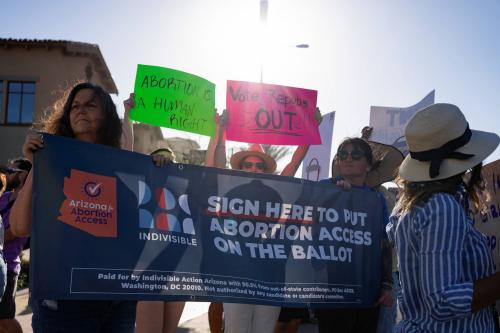The results of the 2020 election continue the pattern of recent decades, in which the political parties have been both narrowly divided numerically and deeply divided ideologically—the worst combination for governing in a constitutional republic with divided powers.
If the parties are divided deeply but not numerically—as they were during the New Deal era—the majority party can govern effectively. If they are divided numerically but less ideologically—as was the case from the beginning of the Eisenhower administration to the end of Jimmy Carter’s presidency—congressional leaders can forge bipartisan majorities with presidential support, and presidents can conduct foreign policies with bipartisan backing. But in the circumstances of recent decades, neither party can impose its will on the other because they are closely divided numerically and ideologically.
In these circumstances, the choice is between compromise and gridlock. And because the parties are so ideologically divided, compromise is unpopular with the bases of both parties and gridlock has become the order of the day.
Because an entire generation has grown up with divided, dysfunctional government, it is easy to forget how anomalous our current situation is when viewed against the broader sweep of American history. Consider:
In the 17 elections stretching from 1920 to 1984, the winner of the presidential contest gained an outright majority of the popular vote 15 times, and the other two fell just short (Harry Truman with 49.6% in 1948 and John F. Kennedy with 49.7% in 1960). In this period, moreover, 9 candidates won landslides—victory margins of 10 percentage points or more—and two others came close (FDR with 9.9% in 1940 and Ronald Reagan with 9.7% in 1980). Most presidents enjoyed the opportunity to advance their agendas and to be judged by the results as they sought reelection.
In the 9 elections from 1988 to 2020, by contrast, the winner gained a popular vote majority only 5 times, and two Electoral College winners came to office while losing the national popular vote to their opponent. During this period, moreover, no candidate of either party got close to a landslide. The best Republicans could do was George H. W. Bush’s 7.8 % margin in 1988; the Democrats, Barack Obama’s 7.2% edge in 2008.
We find the same pattern at the congressional level. In the Senate, Republicans held the majority for 14 years between 1919 and 1933. Democrats returned the favor with their own 14-year majority from 1933 to 1947, followed by an extraordinary 26 years of dominance between 1956 and 1981. Since then, no party has held the majority for more than 8 years, and party control has shifted 6 different times.
This historical reality—long periods of one-party dominance giving way to instability in recent decades—is even more evident in the House of Representatives. After a period of instability and near-parity between the parties through much of Woodrow Wilson’s presidency, Republicans held the House for 14 years between 1919 and 1933, followed by the Democrats for the next 14 years and again for four decades from 1955 to 1995. Since then, control of the House has switched four times, and the majority’s margins have been lower than most of the prior 75 years.
This history helps to explain the pattern of highly partisan governance the United States has experienced during the past three decades. Presidents who win office with narrow majorities know that their room to maneuver is limited. They often hesitate to govern on the basis of long-term considerations if they believe that these policies will be unpopular in the short-term. And when they pursue their party’s agenda in the face of public opposition, they pay a huge price.
President Clinton began by failing to enact an unpopular health care proposal. President Obama began by enacting an unpopular health care proposal. President Trump began by trying to repeal Mr. Obama’s health care law after it had become popular. All three began with majorities in the House of Representatives that they lost after just two years in office, thwarting their efforts to advance their agendas for the rest of their time in office.
Unless Democrats manage to win both Senate runoff elections in Georgia, Joe Biden will enter office without both houses of Congress under the control of his party—the first time this has happened in more than three decades. Even if he tries, he cannot enact into law the most ambitious and left-leaning portions of the Democratic agenda. Given this hard reality, the quest for legislative compromise is likely to dominate his administration from its earliest days. Mr. Biden must hope that he can restore the working relationship he had with Mitch McConnell during their years in the Senate and through much of Barack Obama’s presidency. If the Senate Majority leader is willing to meet him halfway, some progress on urgent national problems will be possible. If not, gridlock and drift will dominate, and the country will continue to lose ground at home and abroad.
But George H. W. Bush’s presidency illustrates the risks of this conciliatory strategy in times of deep polarization. Mr. Bush’s compromise with congressional Democrats on taxes and spending split his party and weakened his campaign for reelection in 1992. If President Biden chooses to reach for modest but feasible bipartisan achievements rather than confronting Senate Republicans with proposals drawn from the Democrats’ platform, will progressives in his party do to him what conservatives did to George H. W. Bush? If so, disappointed Republicans may not have to wait long for the revival of their presidential prospects.










Commentary
Can Joe Biden be a successful president?
November 9, 2020